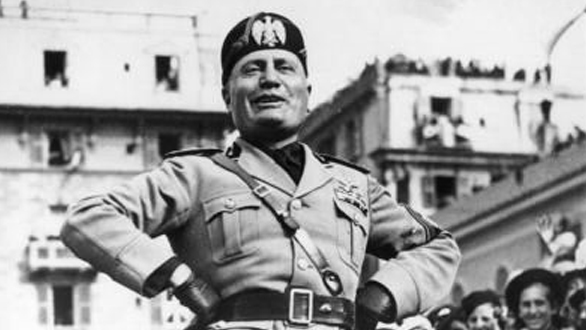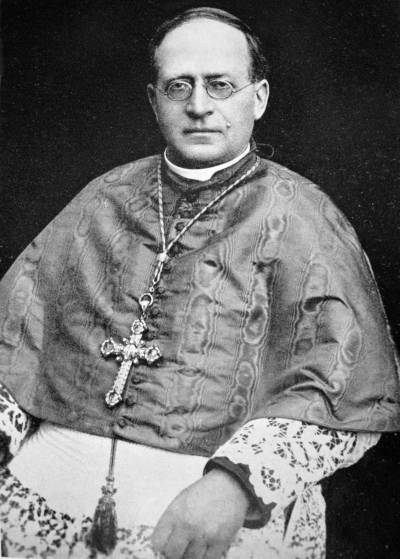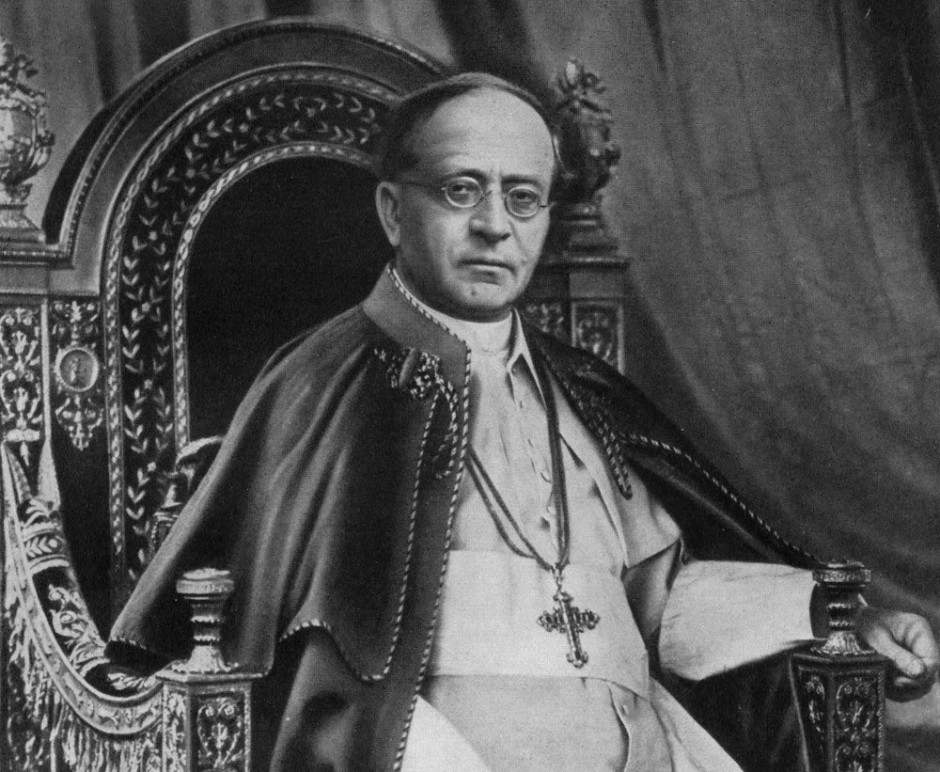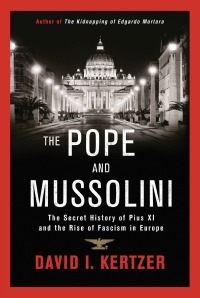Benito Mussolini, the fascist ruler of Italy, and Achille Ratti, the Roman Catholic cardinal anointed as Pope Pius XI, both came to power in the same year, 1922. They were polar opposites in terms of personality, but since they shared a distrust of democracy and an animus for communism, they were able to work together effectively to shape Italy.
Their converging interests prompted the pair to form a pragmatic and mutually beneficial relationship that lasted until the pope’s death in 1939. And while their views were not always identical, they reached a modus vivendi on two important issues — church-state relations and the status of Jews in Italian society after the imposition of the first set of antisemitic laws in 1938.
As David Kertzer suggests in The Pope and Mussolini: The Secret History of Pius XI and the Rise of Fascism in Europe (Random House), the rapprochement between the Italian dictator and the pope was ushered in with the 1929 Lateran Accords, which ended decades of hostility between the Italian government and the Vatican. Mussolini depended on the Vatican to ensure Catholic support for his regime, while the pope counted on the government to help him restore the power of the church, which had been whittled down after the unification of Italy.
Mussolini’s offensive against Italian Jews horrified the pope, prompting him to ask why they had been rendered second-class citizens. But for all of the pope’s indignation, he was very ambivalent about Jews and tacitly tolerated the Nazi-inspired race laws that marginalized and endangered Italy’s Jewish community.
Before the the Lateran pact was signed and sealed, as Kertzer points out in his first-rate work, the Vatican regarded fascism with scorn. Just days prior to Mussolini’s seminal March on Rome, the editor of La Civilita cattolica, an anti-Jewish journal edited by Jesuit priests, denounced the fascist movement as “violent and anti-Christian, headed by sinister men.”
The church had reason to be anti-fascist. A substantial number of fascists, including Mussolini himself, were anti-clerical, and some members of the fascist party had physically attacked and abused the clergy. But after Mussolini entrenched himself, the Vatican softened its attitude, with La Civilita cattolica praising Mussolini’s efforts to restore order, hierarchy and discipline.
Tellingly enough, the pope’s personal emissary to Mussolini, Father Tacchi Venturi, was an antisemite who claimed that the Jews of Italy posed a danger to the country. The pope, while rejecting this view, believed that Jews in central and eastern Europe were a threat to Christianity.
With the rise of Nazism in Germany, the Vatican stayed aloof from Jewish concerns. Even as the pope conspicuously remained silent after Jews in Germany were dismissed from their posts in the civil service in 1933, Mussolini instructed Italy’s ambassador in Berlin to advise Adolf Hitler that his antisemitic policy was a strategic mistake. Mussolini, at this juncture, was not ill-disposed to Jews.
The pope’s position on Jewish matters was probably partially influenced by Vatican officials, some of whom were guided by anti-Jewish conspiracy theories. No less a person than Wlodzimierz Ledochowski, the Polish head of the Jesuit order, tried to convince the pope that Jews controlled communism and capitalism. The periodical he supervized, La Civilita cattolica, called for stripping Italian Jews of their rights as citizens. In the months leading up to Mussolini’s decision to disenfranchise Jews, it published a scurrilous article on “the Jewish invasion in politics, the economy, journalism, cinema, morals, and in all public life.”
On July 14, 1938, the fascist party officially launched its antisemitic drive in the pages of Giornale d’Italia, one of Italy’s leading newspapers. Mussolini thought he could enlist popular support for marginalizing Jews on the grounds that the leadership of the church itself, with some notable exceptions, was deeply antisemitic.

Mussolini’s descent into antisemitism came as a shock to Jews, particularly Jews who had supported his movement from the very outset. Mussolini had never taken seriously Nazi claims of racial superiority– which ran contrary to Catholic teachings — and for many years his mistress and advisor had been Margherita Sarfatti, a Jew.
As far as Kertzer is concerned, the timing of the antisemitic campaign was not coincidental, as Dino Grandi, Italy’s ambassador to Britain, let it be known. He claimed that Mussolini capitulated to Hitler’s argument that there should be no daylight between Germany and Italy on Jewish questions.
And so, a month after the appearance of the infamous racial manifesto in Giornale d’Italia, the Italian government announced a new series of antisemitic laws, to which the Vatican did not object. The pope, however, expressed the hope that Mussolini would not enact “inhumane and unchristian” measures.
In response, Mussolini promised that additional antisemitic edicts would be no harsher than those of the pope’s predecessors. New anti-Jewish laws, promulgated in September, further isolated Jews. To build support for them, the regime cited traditional Catholic texts. La Civilita cattolica, which had been clamouring for such regulations for decades, justified them not on the basis of biology but on the need to protect Christians against “a foreign nation among the nations.”
Finally breaking his silence, the pope declared, “It is impossible for Christians to participate in antisemitism.” But in a disengenuous disclaimer, he added, “We recognize that everyone has the right to self-defence and can undertake those necessary actions to safeguard (their) legitimate interests.” He finished by saying, “Antisemitism is inadmissible. Spiritually, we are all Semites.”
Devastated by the new climate of explicit racism and intolerance, more than 4,000 Jews converted to Christianity. The pope attempted to protect these converts.
Victor Emmanuel, the Italian monarch, signed each and every antisemitic bill brought to him by Mussolini. “The king had no sympathy for the Nazis’ deification of the Aryan race or for Mussolini’s attempts to craft an Italian variant,” writes Kertzer, a specialist in Italian studies at Brown University. “He simply did not have the courage to stand up to the Duce.”

The pope, on the eve of his death, was supposedly prepared to issue an encyclical demanding an end to the persecution of Jews, Kertzer claims. With the pope’s passing, conditions for Italian Jews deteriorated and worsened still after the German occupation of Italy. By 1945, 7,500 Jews had been murdered, the vast majority having been sent to Auschwitz.
In conclusion, Kertzer observes, the Vatican played “a central role both in making the fascist regime possible and in keeping it in power.” And far from resisting the government’s mistreatment of Jews, the church provided Mussolini with the theological cover to demonize them.
Quite an indictment.
This review was published in the Times of Israel.

